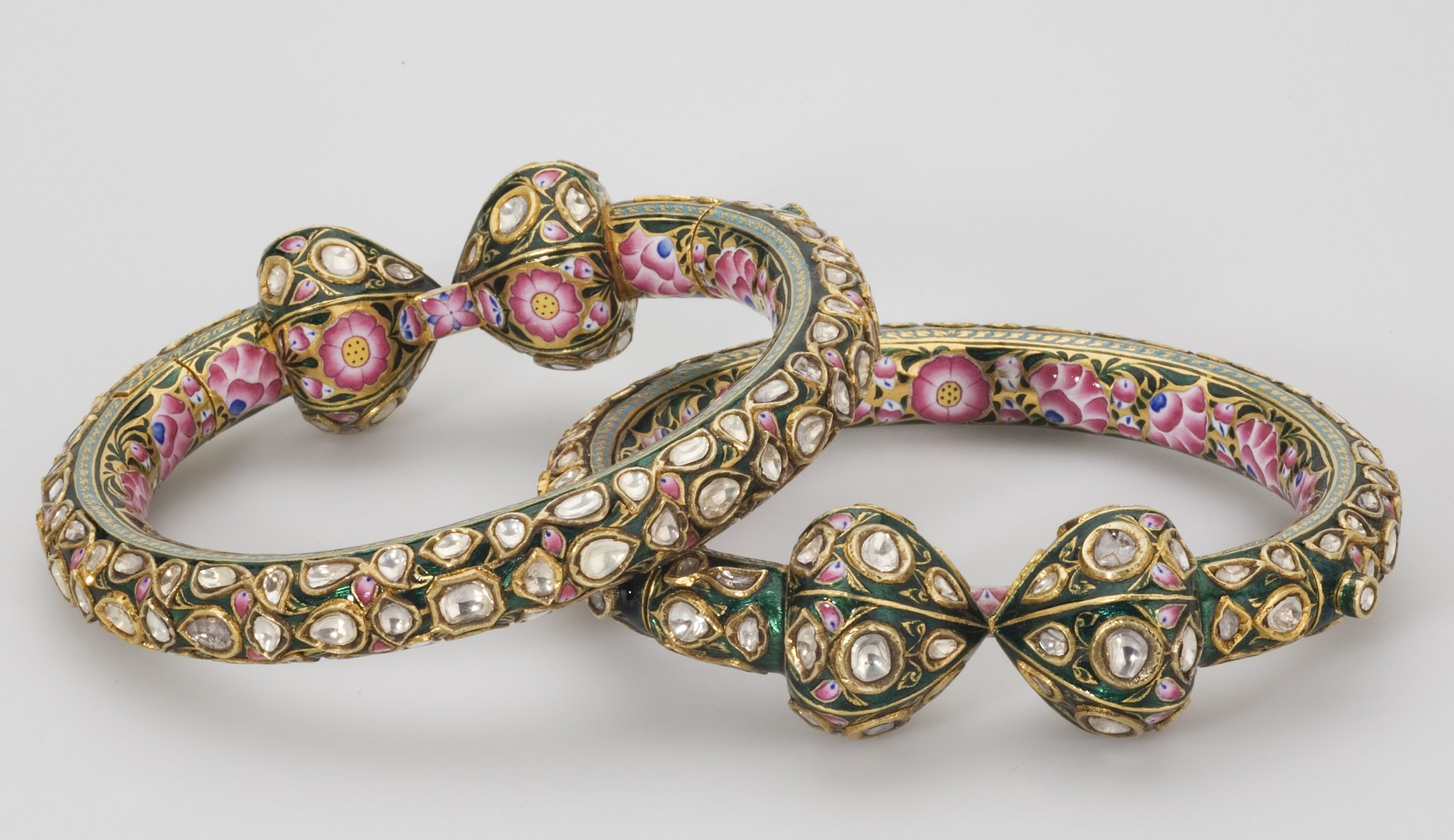 Print Page
Print Page
 Print Page
Print Page
Location: Benares (Varanasi), India
Materials: gold on a lac core, enamelled and set with rock crystals in gold kundan
Dimensions: 12.5 x 11.7cm
Accession Number: JLY 1107
Other Notes:
The anklets, which have two bud terminals, are enamelled in a spectrum in which pink, a colour introduced by 18th-century craftsmen from Kabul who had learned the craft from Persian enamellers, is prominent. This was a speciality of 19th-century Benares. The pink motifs, normally flowers and buds, were painted on white enamel with brushes made from squirrel-tail fur. By the 1880s the craft was almost non-existent and the last great Benares enameller, Babbu Singh, died in 1923.
The inner surfaces of the anklets are enamelled on a gold ground with scrolling foliage incorporating wild roses and rose buds. The green outer surface has painted enamel buds and rock crystals set in kundan, with the occasional small serrated leaf reserved in gold. The terminals are decorated with stylized plants executed in gold, rock crystals and enamel. The enamel colours consist of translucent green, opaque white, turquoise blue, yellow and black, with the tonally shaded pink typical of Benares.
The anklets are hinged and are secured by a gold screw set with a rock crystal. As with Jaipur pieces of the same type, the real screw is matched by a dummy screw on the opposite side.
Bibliography:
P. Moura Carvalho, Gems and Jewels of Mughal India. Jewelled and enamelled objects from the 16th to 20th centuries, The Nasser D. Khalili Collection of Islamic Art, volume XVIII, London 2010, cat.54, pp.128–9.
J.M. Rogers, The Arts of Islam. Masterpieces from the Khalili Collection, London 2010, cat.446, p.371.
